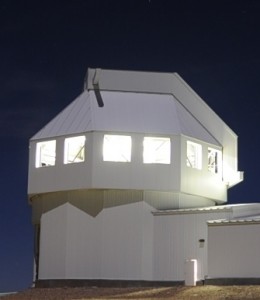Asteroid hunting 101: Go to space
When a 45-meter wide asteroid whizzed by Earth closer than our geosynchronous satellites, it was a good reminder that the world relies on a loose conglomeration of amateur and government-run telescopes to spot dangerous things headed our way.
NOTE: This story was updated Feb. 15 -- the day of the asteroids.
The explanation point was the unexpected explosion of an estimated 17-meter asteroid over Chelyabinsk, Russia, on the same day. Just a few days earlier, NASA's best asteroid scientists held a teleconference with reporters to talk about Earth's impending close-call with the 45-meter asteroid. They had no idea something else was bearing down on Earth and would be the real newsmaker.
If the smaller asteroid was bad, asteroid 2012 DA14 would have been a lot worse. NASA's Don Yoemans said it would be traveling eight times faster than a rifle bullet and would have packed a wallop of 2.4 megatons -- about the same as the 1908 Tunguska, Siberia, explosion that leveled trees for 820 square miles.
So what's in the works to improve our surveillance? A bit of an upgrade will come later this year when detections from the DARPA-developed Space Surveillance Telescope in New Mexico are fed into the Minor Planet Center at Harvard University, the world’s official repository of such data.
The DARPA telescope is still not the answer the rock hunters are looking for. Spanish astronomers detected what is now known as asteroid 2012 DA14 only last Feb. 23. That's not much warning time to plan a deflection mission, and of course no one saw the Chelyabinsk asteroid coming at all.
“Being able to detect these objects is much easier…in the infrared region of the spectrum, and to do that, you really need to get out into space,” said NASA's Lindley Johnson in a media teleconference.
If the intelligence community already has something up there that can do that, the asteroid hunters aren’t acting like it.
NASA has a cooperative Space Act Agreement with a non-profit group called the B612 Foundation, Johnson said. B612 is the name of the asteroid in the children’s book, “The Little Prince,” but this is no game. The foundation wants to launch a space-based infrared telescope called Sentinel that would orbit the sun on a hunt for asteroids.
Ball Aerospace is on contract to deliver prototypes of the sensors for Sentinel, the company confirmed. Because it’s a commercial deal, Ball isn’t saying how much the contract is worth.
The B612 Foundation could have plenty of time. Scientists consider an asteroid impact like the one in Tunguska to be an event that happens on average once every 1,200 years. Then again, why play those odds?



